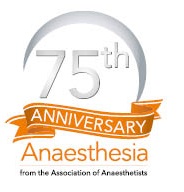Archie Brain: celebrating 30 years of development in laryngeal mask airways

Anaesthesia 2012; 67: 1375-1385.
T.C.R.V. van Zundert, J.R. Brimacombe, D.Z. Ferson, D.R. Bacon and D.J. Wilkinson
Summary
The practice of anaesthesia was revolutionised by the ideas
of Archie Brain. The routine use of a facemask to manage
the airway was not a hands-free technique, despite the
development of various harnesses, and made adequate record-keeping
difficult. The tracheal tube was frequently associated
with morbidity, which some felt was unsuitable for day
surgery. Brain developed an airway management device that
was less stressful to the patient than tracheal intubation, yet
was, however, as safe as using a facemask and airway. Brain
also hoped his device would function for cases where mask
ventilation was particularly difficult and thus give anaesthetists
a safer alternative to a complex intubation, especially in
emergency scenarios.

Above: Dr Archie Brain
Before the invention of the Laryngeal Mask Airway® (LMA) by
Brain in 1981, the airway was maintained by tracheal intubation
or facemask +/- oropharyngeal airway. The 30 years in the
review title covers the period from the publication of his first
clinical trial until the introduction of the LMA® Supreme™,
and describes his drive to develop the LMA from the initial
concept to a clinically usable device, and then to multiple
diverse products with specific functions besides providing a
patent airway. He sometimes tested more than one prototype (some of which are pictured in the article) in a day, and the time
required to manufacture these resulted in the failure to publish
significant amounts of his work.
The article notes that “(ethics) approval in those days carried
no constraint with regard to the number of patients studied….
the practice took several years. It would be difficult to do this
today”, and so the early clinical trials were open-ended as
different prototypes were assessed. However, this exhaustive
process meant that, when factory manufacturing in a range of
sizes commenced in 1987, the device was fully functional [1]
and its use spread rapidly in the UK over just a few years.
Besides its use as a primary airway device, the potential of the
LMA for rescue after failed intubation shortly became apparent,
especially in obstetric cases. This led to the Intubating LMA
(now LMA® Fastrach™), which again could be used both
electively or as a rescue device, but with much improved
success rates for tracheal intubation. Continued development
led to the LMA® Supreme™, combining features of the
Intubating LMA with increased airway seal pressure and an
oesophageal venting lumen, and research continues to this day
[2]. Since this review by van Zundert, even more variants have
emerged.
For the majority of UK anaesthetists, the pre-LMA days are
ancient history, and the LMA (or other supraglottic airway
devices) are preferred so comprehensively that the skills of
tracheal intubation and facemask-holding are considered to be
inadequately acquired. A massive change brought about by
one man!
Dr Katy Miller
Co-opted member of the Trainee Committee, Association of
Anaesthetists
Consultant Paediatric Anaesthetist, Birmingham Children’s
Hospital
References
- Alexander CA, Leach AB, Thompson AB, Lister JB. Use your Brain!
Anaesthesia 1988; 43: 893-4.
- DI Filippo A, Adembri C, Paparella L, et al. Risk factors for difficult
Laryngeal Mask Airway LMA-Supreme™ (LMAS) placement in
adults: a multicentric prospective observational study in an Italian
population.
Minerva Anestesiologica 2021; DOI: 10.23736/S0375-
9393.20.15001-6.